We have lots of holiday traditions in America. There's the proverbial Christmas goose, Thanksgiving turkey, and Easter rabbit, all of which sound pretty typical if you're an American — well, except the rabbit. What I've come to learn, though, is that what's typical depends a lot on where you're from. What follows is my experience trying to raise and eat a Guinea pig.
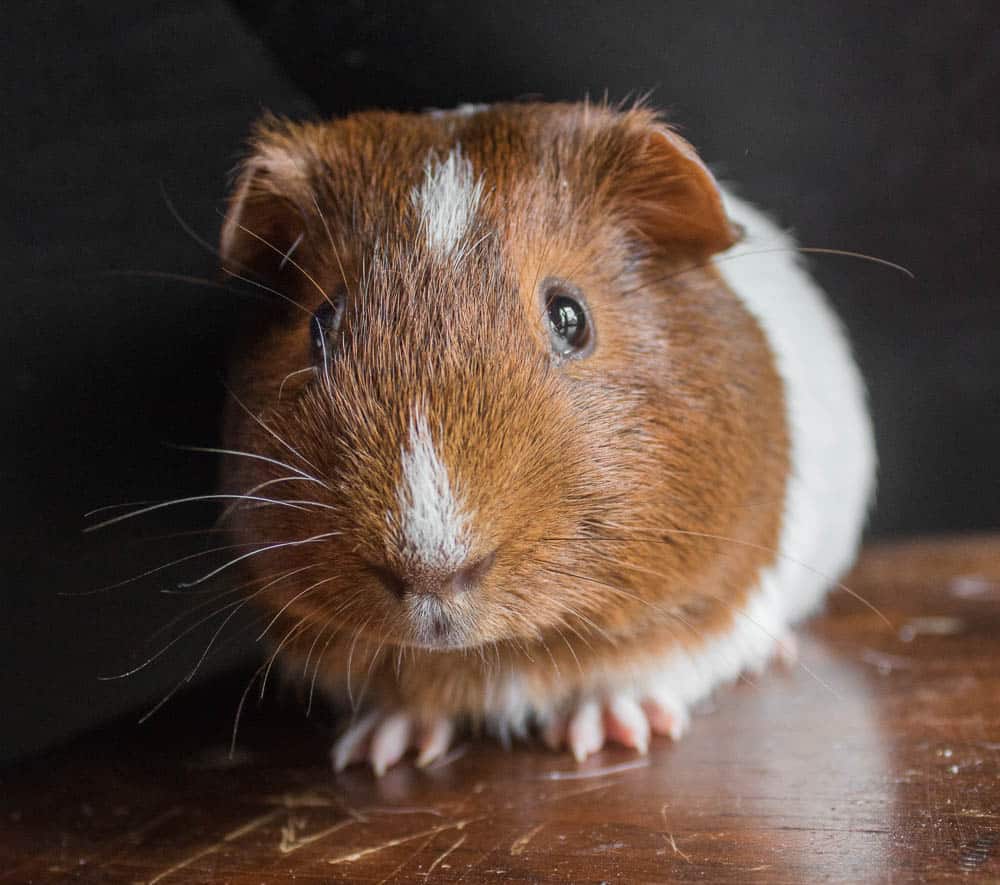
It was about Christmas time last year that I walked into the restaurant and overheard a woman on my dish team — Carmen from Ecuador — talking excitedly about something she was going to eat for Christmas dinner. I didn't know exactly what it was, so I asked.
I got an enthusiastic response: "Cuy!" "Cuy Jeffe!" (Cuy, Boss!)
"What's cuy?" I asked
She struggled, not knowing the word for the animal in English and we moved to the half cognate, half gesticulation that comes with kitchen Spanglish.
"Es un animal pequeno, como un grande ratón. Para Navidad, tenemos quarenta." (It's a small animal, like a large rat. We have 40 to eat for Christmas.)
Still not knowing what it was, I got my line cook (also from Ecuador) to translate.
"Oh, she eating guinea pig! So good!" he said with a big smile.
I'd heard of people eating guinea pigs, but I'd never really spoken to someone to whom it was part of their culture. The only guinea-pig eaters I'd talked to were gringos who'd gone somewhere in South America and eaten some as a gag, purely for its shock value, or as a traveling culinary trophy in the realm of horse, insects, or whatever else one can ingest while abroad that's taboo in the States.
Carmen spoke so happily about them, though, I had to know more. I love to hunt down food traditions almost as much as I like to hunt mushrooms, but in our age of homogeneity, anything I can find that's pure, untouched by the culinary zombie melting pot, is worth its weight in gold. Food traditions are colorful, unique emblems about who each of us are, sewn in the fabric of culture that assimilation is hell bent on turning monochrome.
I had an idea. I've never had time to be much of a hunter (usually I just cook whatever my friends or relatives harvest). I've always wanted to explore animal slaughter and butchery — not just butchery per-se, since I'm well versed in that, but more the emotions that come with respectfully killing for food something you've raised, fed, and treated well.
As a society we're disconnected from the meat we eat: Chickens have only giant boneless breasts, offal is garbage, and anything that has skin or isn't spoon-tender is looked down upon. And that's just poultry.
There's also the problem with the amount of feed we give to pigs and cattle in proportion to the meat we harvest. Compared to typical barnyard animals, smaller animals like guinea pigs and rabbits produce far more meat in proportion to what they eat. The current cycle and scale of meat production is unsustainable and we need to seriously reconsider more efficient (and humane) ways to produce meat.
There's are ethics questions, too, of course: What makes a rabbit raised for meat different than one a sitting in a child's lap? Would the shock of eating a pet dog be different than the disgust someone who reveres cattle feels when they see someone eating a burger? How and where do we draw the lines between meat and companion?
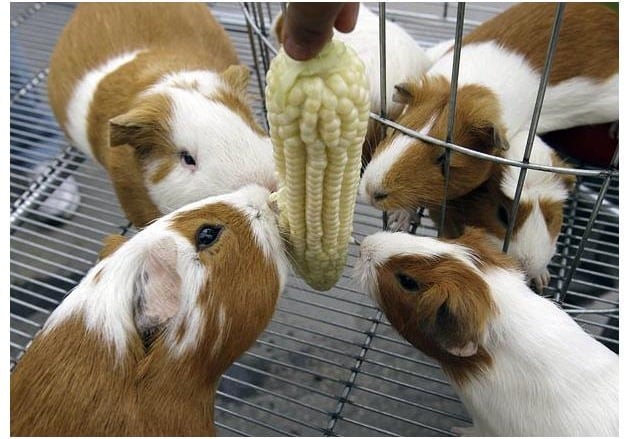
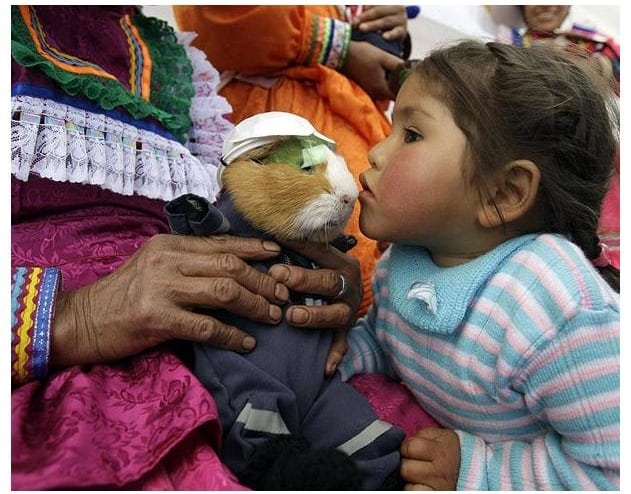

Inspired to question the meat supply and ethics status quo of the entire world, I asked Carmen where I could buy a cuy. I knew I wouldn't in good conscience be able to get one from a pet store, and after doing my research for a few minutes I saw some people raise larger guinea pig breeds called giant cavy (another word for guinea pig), closer to the size of rabbits. Carmen said she would look into it for me, and I forgot about it for a couple weeks.
Two weeks later, Carmen showed up early for a shift with a reusable grocery bag and beckoned me over. Inside the bag was a little guinea pig. I gave her 30 bucks, put it in a cardboard box with some fresh vegetables and took it home. I didn't plan on keeping it long, so I rigged up a little home for it out of an empty beer box and some typical store-bought animal bedding. It wasn't the Taj Mahal, but I did have a great selection of fresh vegetables to give it every day.
I tried to keep my distance emotionally, and the words of my friend Madison Parker would echo through my thoughts:
"I don't name them (squirrels); you can't eat them if they have a name."
I knew there was truth in Madison's words, and I'd heard my Grandpa say similar things when telling me me about raising rabbits in his garage. Pets have names; animals raised for meat do not.
I knew I couldn't get connected emotionally to the little thing and I didn't see it being a problem. I had a couple as a kid and all I remembered about them was high pitched squealing, and stinky cages. They always seemed to live in a constant state of alert too, prey animals that they are, the eons of being hunted and eaten by things cultivating a psyche of fear passed down genetically from generation to generation.
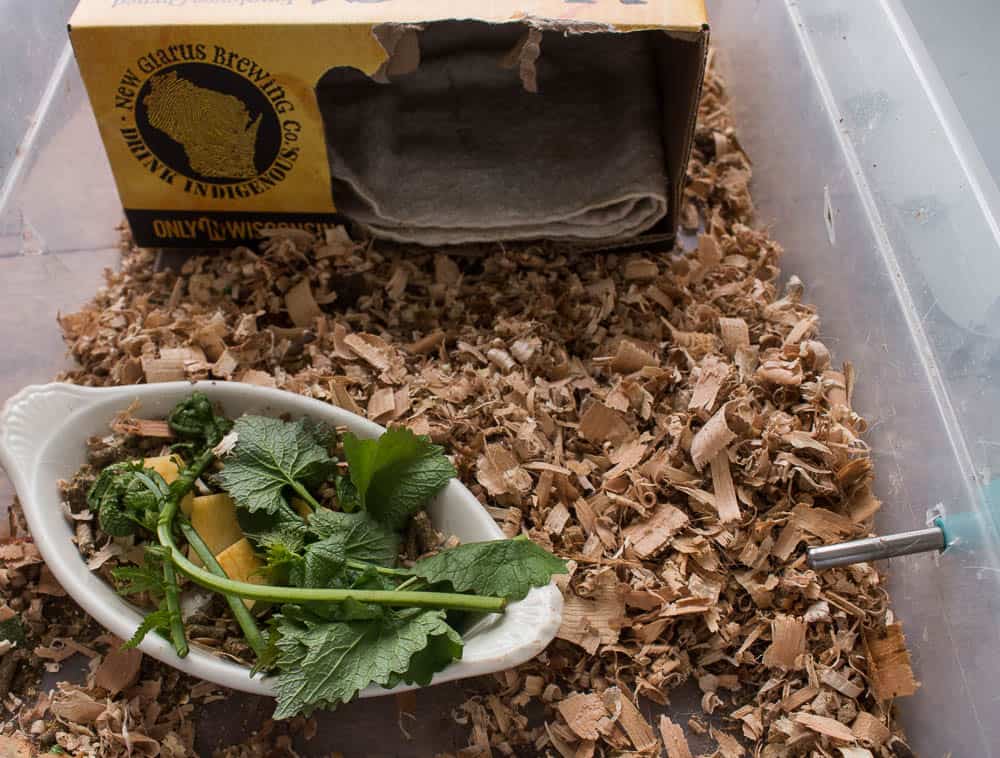
I kept the creature around, feeding and doing general maintenance for a month or so. Then, one night my girlfriend stopped by. She was aware of the guinea pig goings-on, but had wanted to steer clear to save herself heartbreak. When she saw it, she immediately took a shine to it, and demanded I improve its living situation. In the next few days, she began referring to it as "Maggie." Then a few weeks later, a giant guinea pig cage showed up at my apartment.
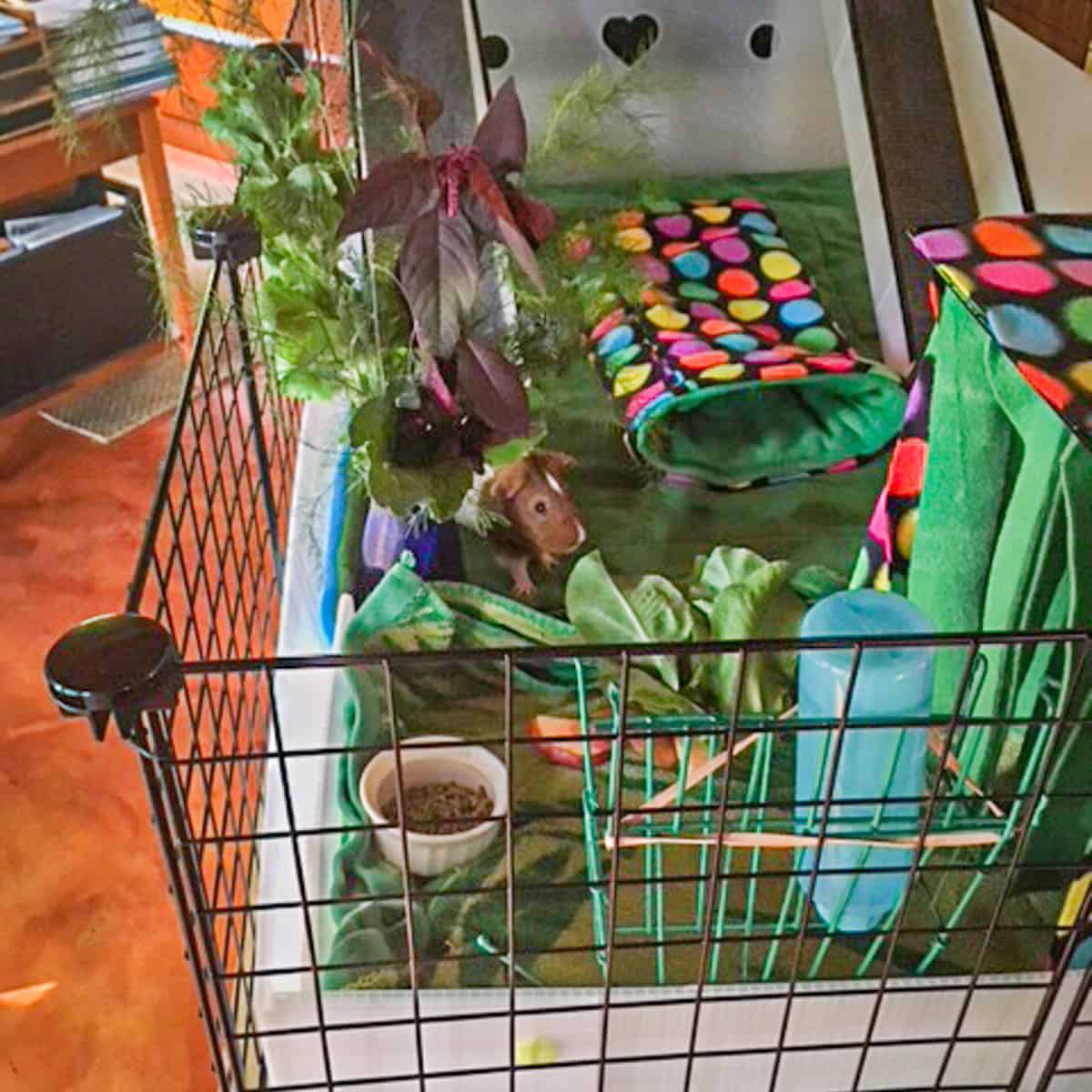
My girlfriend told me that she was just trying to help keep this poor little guinea pig comfortable, but something inside me knew that my soul-searching foray into guinea pig cookery was now doomed. She'd given the damn thing a name, and made little cooing noises at it, and now it felt like some boundary had been crossed.
For a while, I ignored the "Maggie" moniker, continuing to refer to the pig as "it" or the "meat cavy" — a futile attempt to brush off my girlfriend's affection and to focus on completing my experiment.
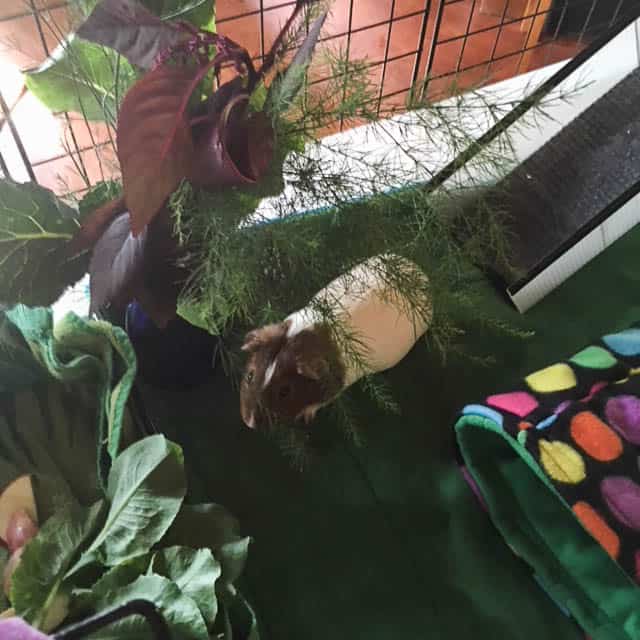

Eventually things came to a head, shortly after a certain someone purchased yet an even bigger and more luxurious two-story guinea pig cage, replete with a fleece bedding, a separate dining area, a "fleece forest; a plush, strawberry-shaped bed; two separate ramps (for piggy zoomies); plus various igloo-shaped hiding spots, tunnels, and a hammock.
My girlfriend had evidently done enough additional research to discover that A) guinea pigs require room to run and toys to play with; B) they really need at least one other piggy for company; and C) Maggie was, in fact, a boy.
We decided the best thing to do with Morty (his new name) was to find him an adoptive home where he'd have a friend. My girlfriend started asking around and a few weeks later, an inveterate guinea-pig lover showed up and brought Morty home.
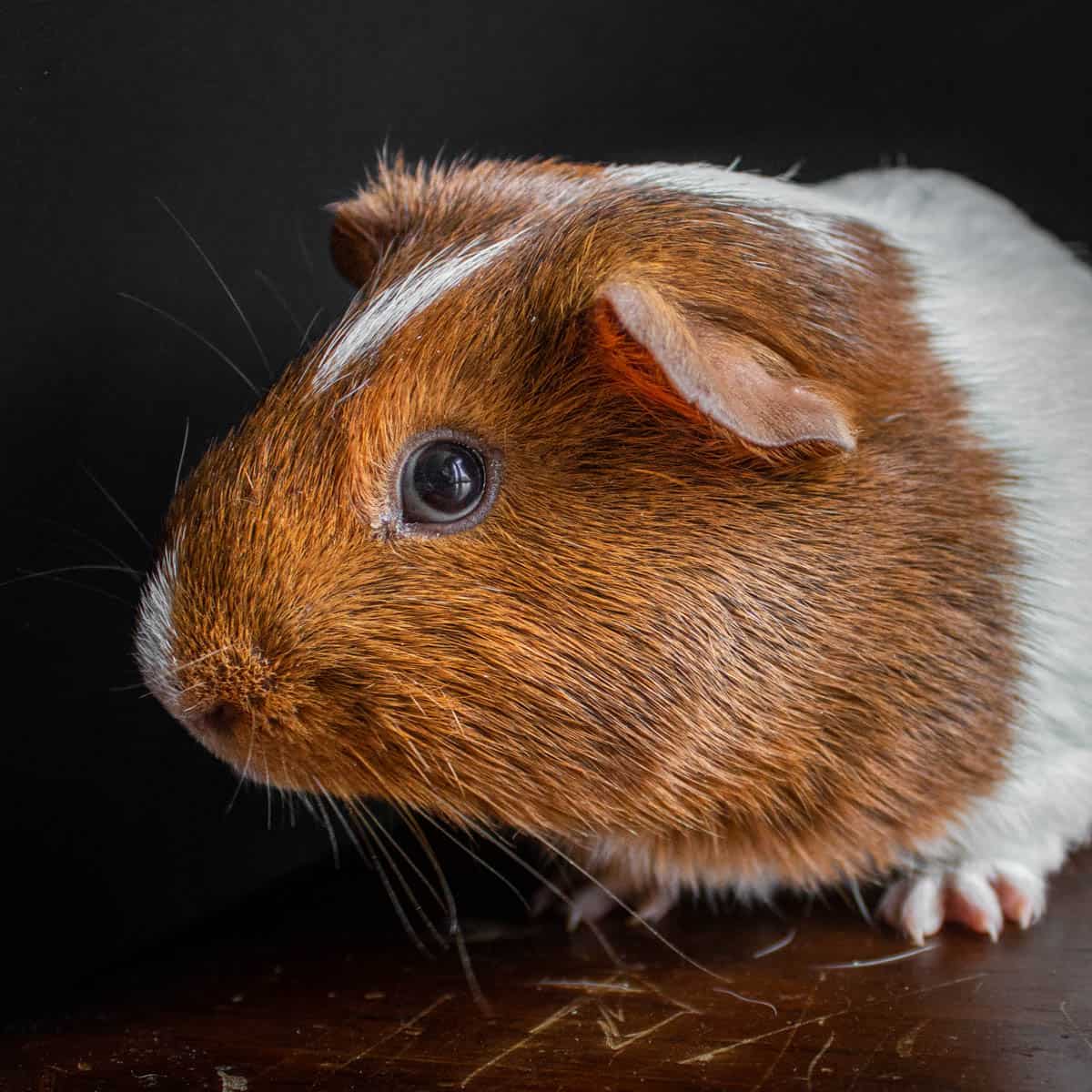
At first, I felt a little bit of a loss: What about the burning culinary questions I had and all the statements I wanted to make? After reflecting for a while, I realized that I probably knew the answers to my questions all along.
The real difference between meat that's appropriate or inappropriate to eat is decided by each of us, and as my friend Hank Shaw puts it: "We all draw our own lines." If you feel disgusted by the thought of someone eating a dog or a cat, like it or not, the fact that it's being eaten isn't "bad."
Your feeling is based in your cultural upbringing and personal experience, and those can evolve over time. Like so many things, there might not be black and white answers, only shades of grey.
So the question remains, will I ever be able to pursue my dream of sustainable guinea pig raising and ethical harvesting, not to mentioning taste testing? If history is any indication, it will depend on my girlfriend.

Leonard Shatner
Hello, I'm known as Ghost on RabbitTalk.com. I found this WordPress post while Googling for English speaking people interested in raising guinea pigs/cuy for food. My experience eating guinea pig is from a friend who herd raises them as food for reptiles and medium sized felines. I found the three times I ate GPs delicious every time. As a westerner, the only thing I can relate it to is pork. The texture of the meat is like chicken, but the flavor of the meat is more like pork chop. Cuy fat is very much like pig fat, I have found it very good at making gravy, and I'm not good at making gravy.
If your interested in my thoughts on the subject, you can click on my name to read my post on RabbitTalk. RT is a BBS style forum, so it's not just my thoughts, it is many people taking part in a discussion. The forum is primarily rabbits, but there are people with rodent experience on RT.
Kim Yong Sun
How wholesome! Omg <3
Vix
I've eaten rabbit, and it's difficult to get exited about it. It's very sinuous, and I suspect Guinea Pigs would be sinuous, as well.
I'd say it would be something poor folk would eat, that can't afford anything else.
Alan Bergo
Vix. I've cooked hundreds of rabbits, wild and domesticated, and I can just about guarantee "sinuous" just means they've been undercooked or improperly prepared. The only difference between wild and farmed rabbit is that wild rabbit will be tough if you try to cook it quickly: grilling, roasting, etc. Farmed rabbit, as it gets less excercise, is more fatty, and has naturally tender meat as they're harvested at a younger age, because of that, it can be cooked slow or fast. Most of the time I braise rabbits until the meat moves from the bone, and it's excellent eating--no matter if they're from the woods or a farm. Assuming small game is poor people food is an elitist point of view at best, and ignorant, cultural food-shaming at its worst. It's good to consider too, that rabbits and other small creatures like cuy are extremely efficient from an input perspective, much more so than beef or pork, and on a menu, are probably going to be priced comparatively higher than "regular" meats. I used to sell 1 rabbit leg on a plate for 30$, easy.
Cindy
Not sure what you mean by sinuous, which means curvy or with lots of bends. If you mean something like tough, you need to make sure the rabbit meat is aged for 2-3 days to get past rigor mortis.
C
I'm thinking they probably mean "sinewy".
Jerome Howard
I'm an American who has traveled a lot in Central and South America. I have had four meals of guinea pig in Peru and Ecuador. Fantastic! What is it like? My best description is: Imagine when the Thanksgiving turkey comes out of the oven, and you go for the wings and the skin. Crispy, flavorful. Not a huge amount of meat on a guinea pig. Usually served with side dishes such as lots of potatoes with hot sauce, and other sides, so the whole presentation is a nice filling meal. You have to "get right in there" and eat with your fingers, fork and knife won't do it. You have to work every little bone for all the morsels of goodness. When it is on your plate you definitely know you are eating something unusual. Served either whole or cut up, either way it is pretty graphic. My wife finds something else to look at as she endures my lengthy enjoyment of my guinea pig meal. Like any "traditional" food of this sort, some of the people in the countries where they eat it (Peru and Ecuador) really like it while other locals cringe at the thought of eating it. My recommendation: Try it!
Andrea Vaughn
He's so stupid to wanna eat guinea pigs!!! Wtf!!!!!
Carolyn
As a guinea pig mom, I'm glad your story had a happy ending, in my opinion. But also, I'd like to point out the differences in American guinea pigs and Peruvian ones. In the guinea pig community, we call the Peruvian ones "cuy" and distinguish them, because there are actually plenty of differences. Cuy pigs are larger, have a lot of health issues and usually only live about two years, whereas the pet guinea pig version lives 4-8 years. Cuy also have a more irritable temperament. If you do decide to pursue this again, I'd advise against getting a pig from the pet store or any pet-store version since they're much smaller and have less fat, you'll get less meat and it likely won't be as tasty. Cuy and pet guinea pigs can also crossbreed, so you might find a lot of part-cuy pigs. Looking at the pictures alone, I don't think Morty was cuy. He might've been a rather disappointing meal!
Alan Bergo
Hi Carolyn, I appreciate your comment, even moreso as you're a guinea pig mom. Recently I had someone who raised another odd animal I eat (still haven't had cuy) tell my I was a psycopath for eating animals he raised as pets. People can get heated when we start talking about eating animals some raise as companions (I would never eat a companion animal, to be clear). Yes, Morty was not large, and I suspect that the prep cook raising them in his garage knew he wasn't as large as those he ate in Ecuador, but it was what he had access to. This is probably why my other dishwashers family was going to eat 40 of them for christmas--it would take a lot to feed a crowd. You'll be happy to know I get occasional updates on morty and he's doing fine, spoiled by a single lady in a loving guinea pig home. 🙂
Joseph
Marvellous read, fantastic story. I am an Englishman living in Portugal, on a mission to produce as much of the meat as I consume as I possibly can in a ethically produced, humanely slaughtered way, I have a colony of meat cavies and am yet to taste them, I thoroughly enjoyed your post..... Keep on writing my friend! Truly interesting!
Joseph.
Alan Bergo
Thanks, good luck with your meat cavies!
Luis
I’m Ecuadorian, and this story was great. Good thing you didn’t end up eating it because, in connection to your story, the animal needs to move around. We actually have a shack in the back of my house where the guinea pigs dig tunnels and run around all day(and poop); plus we feed it grass that grows nearby. I have never eaten one that was purchased in a pet store and lived in a confined space, but am pretty sure it won’t be the same. I think it’s great that foreigners are looking at our culture from a different perspective
Alan Bergo
Glad you liked it Luis, that was my goal. It's been fascinating learning about them.
Yon
Dig the New Glarus mansion. Living in style
Alan Bergo
Lol. I wanted to give it something to "live" in, but I wanted to do it on the cheap. It loved the beer box digs, just had to replace it once in a while.
Alvaro
A really interesting experiment. Food for thought... literally!!
Annie
I love the storytelling In this piece- but I'd like to challenge you on the ethics of giving a guinea pig intended to be food away as a pet. I raise rabbits for meat and people occasionally ask if they can have one as a pet... and I find I have to say no, and encourage them to adopt from a shelter instead. My rabbits are not raised to be pets, and they are not socialized in the same way that a pet bunny would be. Behaviorally, they're very different- I know because I've had both. I suspect that as prey animals, the transition from well treated pasture raised livestock animal to constantly doted on indoor pet could actually be pretty stressful for them, and they would end up in an animal shelter (that are already overrun with small animals that no one wants because they're not cute baby bunnies for Easter), or worse, cruelly released into parking lots and woods to 'fend for themselves'. Admittedly, I know a lot less about guinea pigs than rabbits (and it sounds like you found a lovely, qualified home for this very cute piggie) but I wanted to bring up a different side, and point out that there's a bit more to the ethical considerations of the meat versus pet dilemma than whether or not you name it (it is an interesting line!)
Alan Bergo
I have had some of the best conversations of the year involving this post, and your contribution is right up there. The psychological differences of an animal raised for meat vs an animal raised to be a pet is definitely something to consider. I think that prey animals will have less of a dichotomy. The animals that would have the greatest behavioral differences, at least to me, seem to be those up the food chain a bit.
One memorable talk I had was at my friends home over dinner. He and his wife told me a story about their friend that traveled in China. One day, while they were driving through the countryside, he saw a field, a field packed full of of German shepards. After he asked his host/driver about it, not knowing why there would be so many dogs in one space, the driver enthusiastically asked if he enjoyed eating dog. I suspect having one of those German shepards as a pet wouldn't be the best choice, especially if they're older, which digs up another thought I had on development.
I suspect that, like so many things, there's a critical period during development where the important imprints are formed, maybe if you got one of the German shepards as a very young puppy it could be steered towards being a companion animal. I doubt I will ever know the answer to that.
To circle around to the beginning of my comment on animals "up the food chain" which could also be read as "more intelligent", it's reminded me of how intelligent pigs are. Pigs are super smart, (I used to have a potbelly I let sleep in the bed) as well as being one of my favorite things to cook. Life has so many contradictions when you search for them.
Laura
I always had pet rabbits growing up but my Grandfather raised them for meat. I now follow in his footsteps and have only named 1 rabbit that we "rescued" from a shelter to use as a breeder. She was a wonderful mother and feel like I owe it to her to live out her days in the grass. I also have chickens for eggs and eventually the time comes when they no longer serve the intended purpose and must be culled. I have the highest respect for the types and variety of meat and it disgusts me how people want meat that has no skin or bones! It was a delight to read you story because I also had Guinea pigs as a kid and when I realized people also eat them I was immediately intrigued! I can't say I've never eaten what we think of as pets in this country, but it wasn't intentional. Be careful where you buy your meat, if for no other reason than preparing it the way it tastes best.
Alan Bergo
"Be careful where you buy your meat" Wise words Laura.
Lori
In Cuzco, where the Spaniards brought both Christian theology and a tradition of religious painting, there is a famous depiction of the Last Supper, the main course being served is, of course, cuy.
https://en.wikipedia.org/wiki/Marcos_Zapata
Motherhemcreations
See I keep my breeders as pets. The girls have a big cage like the one you have. The babies are raised with just as much care and love. To me I'd rather the animals.i raise for meat have a bad few seconds but the rest of their live haven been great. It's the same with my chickens. I'd like rabbits eventually also. I can't dispatch large animals myself there's just something about how you need to do it that stops me.
Alan Bergo
I agree with all of that. And yes, larger animals require different equipment to keep things humane and quick. Highly suggest you try rabbits in the future-they're great.
Emily
Great story, but I must admit I'm a bit disappointed by the ending. I wanted to know how they taste..
Alan Bergo
Sorry I can't tell you, soon I'll let you know how the possum was I had in it's place.
LaRae
Love this story!????
Sam Schaperow
Well written telling story.